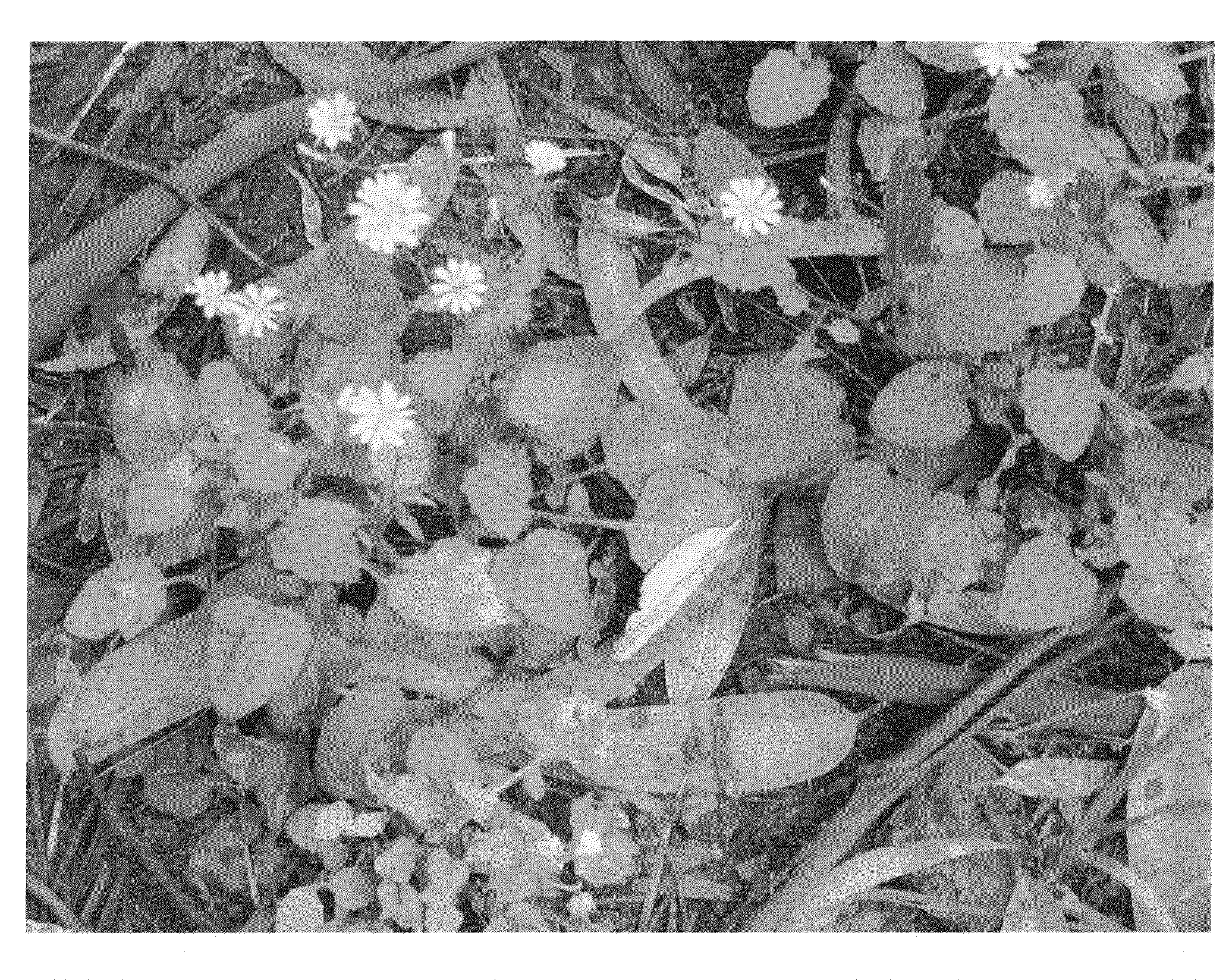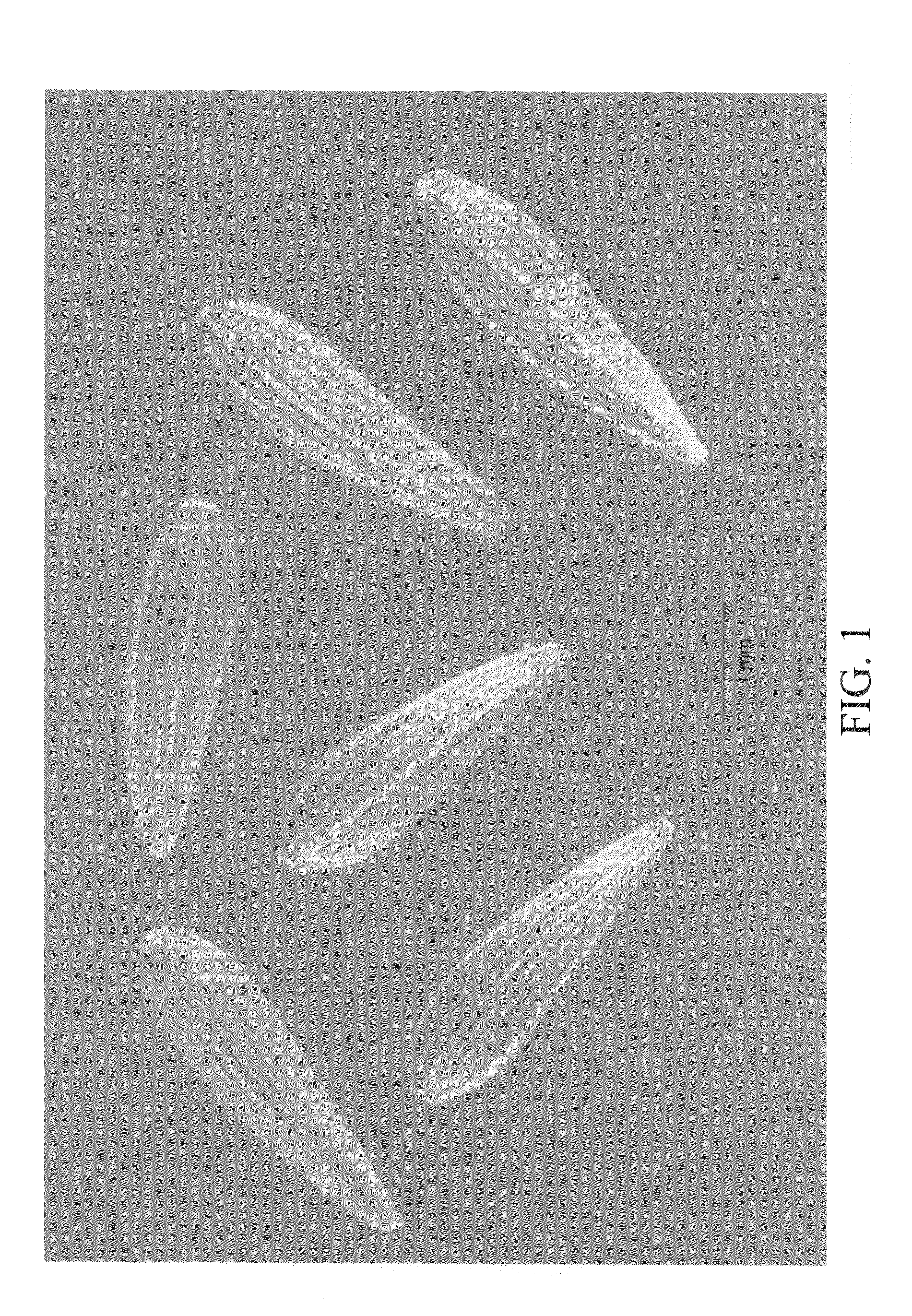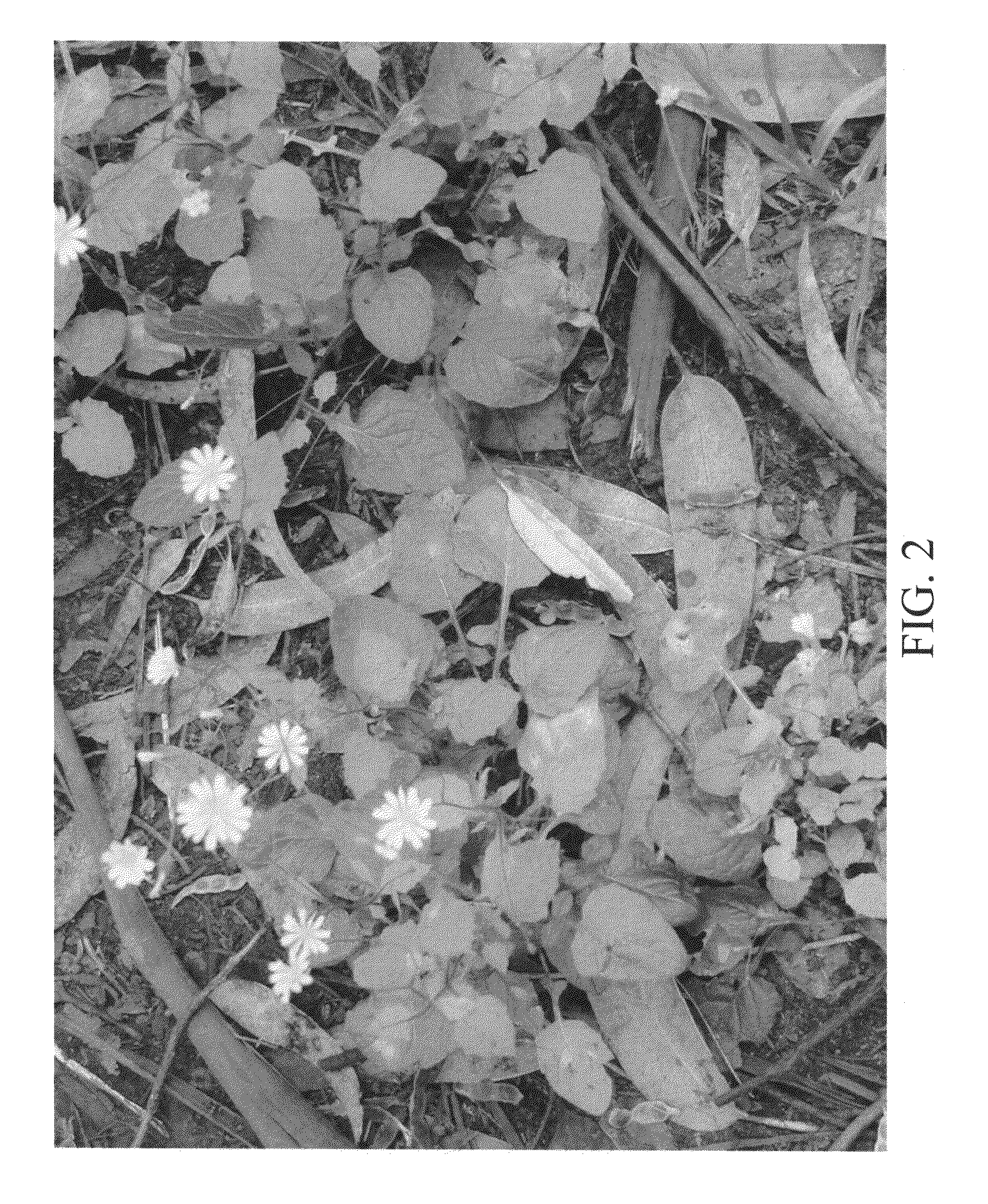However, despite a plethora of advertisements from various manufacturers of wild deer forage forbs advertised as allegedly attractive to deer including highly attractive to deer, thus far a deer forage forb has not been identified that is so attractive to deer that deer feel compelled to visit a forage plot of such forb and / or including such forb despite the presence of their normally preferred native browse.
That is, it is safe to say that despite the plethora of commercial claims to the contrary, no one has yet proposed a wild whitetail deer forage forb that is highly attractive to such deer beginning in early spring even in locales that are too cold to grow beans in the springtime.
Unfortunately, these bean forbs do not grow well at a time or in a location where soil temperatures are not averaging above about 65 degrees Fahrenheit (“° F.”).
Consequently, these bean forbs are incapable of attracting the wild deer when they are not growing during the earliest portions of springtime such as spring green-up.
Due to the presence of high levels of
thyroid inhibiting compounds and heat stable estrogens in soybean variants, such beans do not actually improve
antler growth, and are even likely to impair
antler growth.
Because deer browse a plethora of plants, there exists no guarantee that deer browsing a particular plant at a particular time or location indicates that the plant attracts deer well enough to warrant cultivating that plant specifically to attract deer.
Furthermore, there exists no guarantee, hint or suggestion to anyone that a forb or other plant browsed by deer and not having had its effect on
antler growth or
mass already objectively evaluated increases deer antler size and
mass, or deer healthfulness and
survival rate.
Furthermore, there exists no guarantee that forage eaten regularly or at a certain time of year by one deer specie is attractive to another deer specie at a
similar time of year.
In fact, it is a widely held belief that a forb browsed by red deer are not necessarily attractive to wild whitetail deer, mule deer, coues deer and blacktail deer.
Consequently, because deer eat a particular plant does not provide any hint or suggestion that plant may be used advantageously to attract deer to feed at a particular location.
For example, wild whitetail deer are known to eat grass, but can become sick and die in a
pasture in which cattle thrive, or in which even other deer thrive.
Whitetail deer actually cannot survive on forage on which other types of deer thrive.
However, it is unknown whether brome grass improves whitetail deer antler growth, nor even if whitetail deer prefer brome grass.
However, experiments have established that wild deer do not eat certain plums propagated and enjoyed by humans.
Furthermore, there exists no hint or suggestion that a plant consumed by humans is capable of enhancing antler grow or increasing antler
mass in wild whitetail deer, nor that deer are attracted to such plant during spring green-up, spring, early summer, summer, fall or any other time.
Conversely, some plants, plant fruit or plant leaves, for example
cherry tree leaves, that are highly attractive to deer, may be poisonous to humans and other
animal species.
Furthermore, deer eat many plants in limited quantity solely to acquire substances that support the microbes living in and on the lining of the deer's ruminating chamber that the deer needs for digesting consumed forage.
For example, brassicas grown from seed marketed by Mossy Oak Biologic Seed Co. are not considered to be attractive to deer until a suitable
frost occurs.
Consequently, these types of brassicas are unsuitable for attracting deer until after a hard
frost, and usually until after both a hard
frost and a sustained period of freezing temperatures occurs.
Thus such brassicas are not attractive until after a fall frost or winter frost.
However, wild deer typically do not find clover forage plots attractive until sometime during summer or even fall.
Furthermore, just because deer are known to eat a particular plant does not suggest that deer eating the plant enhances antler size and / or antler growth.
Consequently, just because deer are known to brows a certain plant including forbs does not suggest to plant a forage plot of the plant that will be sufficiently attractive to wild deer that the deer to repeatedly and reliably visit the forage plot.
Furthermore, there exists no hint or suggestion that a plant browsed by deer whose effects on antler growth has not yet been objectively established in any way improves deer antler grow or antler size.
In fact, it is a widely held belief that naturally existing forbs provide inadequate forage for optimizing whitetail deer antler growth, and that deer must consume specifically bred hybridized plants to enhance antler growth.
Furthermore, it is a widely held belief that unless a deer and especially whitetail deer consumes such specifically bred hybridized plants in sufficient quantities and for a sufficient period of time, that the wild deer has no chance of reaching its potential maximum genetic antler development.
It is widely believe that wild whitetail deer cannot reliably reach their potential maximum antler development with naturally occurring forage even if the deer prefer such naturally occurring forage to hybridized forbs.
However, several problems continue to plague land managers beyond breeding and providing forbs that are maximally attractive to whitetail deer, and that are also capable of:1. maximizing antler growth of whitetail deer;2. maximizing
body size of whitetail deer;3. optimizing the healthfulness of whitetail deer individually and in herds;4. providing large amounts of forage in a
short interval, perhaps a few months, after
sowing the forb's seeds;5. providing forage that is maximally attractive for as much of the year as possible particularly for as much of the whitetail deer's antler growing period of the year as practicable.
One of the problems land managers encounter is acidic soil.
While
lime itself is not very expensive, the cost of associated machinery to spread and till
lime into the soil and the machinery's operation is expensive.
Furthermore, in areas inaccessible to such machinery, such as remote hunting locations, liming is impractical.
Thus far, despite claims to the contrary all known varieties of deer forage forbs that can be successfully grown by
broadcasting the forb's seed onto untilled soil have not been scientifically proven to enhance antler growth or increase antler mass.
Furthermore, forbs that can be successfully grown by
broadcasting the forb's seed onto untilled soil have not been scientifically proved to attract wild deer during spring or even summer months.
Another difficulty plaguing establishment of deer forage plots is that thus far a forb has not been identified that:1. can be economically and easily planted during the fall, and be sufficiently grown and ready for sustained browsing by wild deer at
normal population levels during the following spring; and2. has the additional property of being sufficiently attractive to wild deer so as to repeatedly attract deer during spring green-up or shortly after spring green-up and during spring.
The problem is that such bean forbs do not grow in much of North America, much of the range of the whitetail deer, because spring temperatures are too cold.
This means that even where bean forbs grow in the spring they are unavailable during spring green-up because that is when the forb's seeds may be germinating so the forb becomes available rather later in the spring.
A main difficulty in providing a forb having the above mentioned favorable characteristics and that also is attractive to deer during spring green-up is that spring green-up is when nature provides the most
nutritious food sources for hungry deer having survived a winter.
As indicated above and discussed in more detail below, further problems include that it is often expensive to establish forage plots most attractive to wild deer using currently commercially available products such as popular clover blends, alfalfa blends and chicories.
Because such forbs tolerate a
narrow range of soil acidity, establishing forage plots using them frequently requires time, energy and resources for repeated
lime applications.
For chicories, the high cost of establishing a forage plot is acerbated by a high cost for reproducing and harvesting the forb's seed since chicory plants produce relatively little seed.
Those commercially available forage forbs that tolerate more acidic soils and are less costly to establish, such as brassicas, have the
disadvantage of not being preferred by wild deer during spring green-up or even summer.
 Login to View More
Login to View More 


